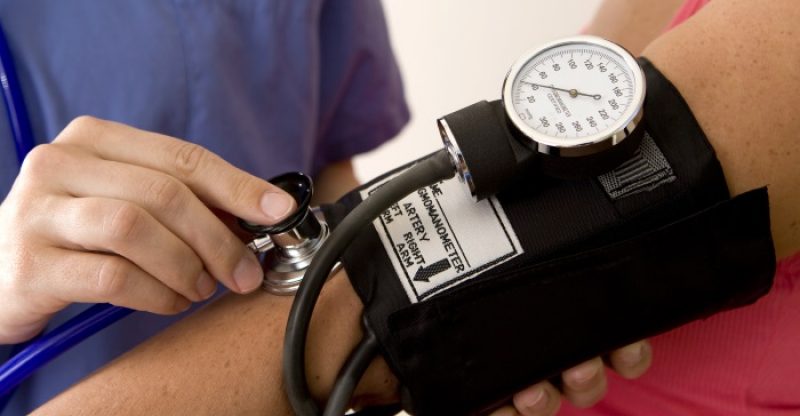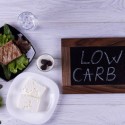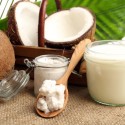Science-Backed Natural Ways to Lower Blood Pressure
High blood pressure is quickly becoming a more severe and chronic problem in developed countries.
Hypertension, or high blood pressure, affects millions all over the world, and the rise of the Western diet and move toward different lifestyle choices is having a profound impact on human health.
You could be one of the 32 percent of Americans who suffer from high blood pressure, in which case you should be looking for ways to reduce those numbers and keep your blood pressure in check (1).
Our guide will help you understand why high blood pressure is a significant health risk, how to monitor it to keep tabs on your health, and natural ways you can reduce your blood pressure without medications.
As hypertension is becoming a growing concern for more and more people around the world, it is vital that everyone understands the risks associated with having chronic high blood pressure, and how to lower your blood pressure successfully and for the long-term.
It is currently estimated that half the people around the world with high blood pressure are not even aware they have a problem, so knowing your risks and monitoring your pressure is the first step to tackling this health crisis (2).
Changing your diet and lifestyle to support healthier blood pressure levels will be the second step in managing this cardiovascular risk factor.
Read on to understand all this and more as it relates to your blood pressure.
Why Your Blood Pressure is Important
Your blood pressure is comprised of two different measurements.
The first is the measure of your blood’s pressure or force while your heart is beating, and this is known as your systolic pressure.
The second is the measure of your blood’s pressure or force while your heart is at rest, which is known as your diastolic pressure.
These two numbers combine to give a picture of how much pressure is exerted at all times. Each is measured in millimeters mercury (mmHg) (3).
When you receive your blood pressure measurement, it is reported as your systolic pressure over your diastolic pressure.
Understanding what is normal and abnormal is important for monitoring your health.
Here’s an example. Let’s say your blood pressure is measured at 135/85.
That means your systolic pressure is 135, and your diastolic pressure is 85.
In a healthy individual, it is expected that your systolic pressure would be less than 120 and your diastolic pressure would be less than 80.
In our example, your pressure would be outside the normal range.
So how high is too high?
Elevated blood pressure is considered to be when your systolic pressure is between 120 and 129, and your diastolic is less than 80.
Blood pressure in this range is elevated, but not so high that it should be worrisome.
If it stays in this range or rises any higher, though, there is cause for concern.
Some refer to this as pre-hypertension. Our example is still above this range, though.
The next range is known as Stage 1 high blood pressure.
If your pressure is between 130 and 139 systolic and 80 and 89 diastolic, you are in Stage 1.
In our example, you would have Stage 1 high blood pressure, which means your heart is at risk for a number of problems.
You can also have blood pressure that falls within the range of Stage 2 high blood pressure.
Any systolic measurement over 140 and any diastolic measurement over 90 is considered to be Stage 2.
This pressure is extremely high and should be reduced as quickly as possible (4).
Understanding High Blood Pressure
Having high blood pressure means your blood is flowing through your blood vessels and arteries at higher than normal pressure.
When your heart pumps your blood, blood pressure is the measure of the force with which the blood is pushing against your arterial walls.
When this pressure is high, especially long term, you can damage your heart and put yourself at risk for a number of problems, including stroke, diabetes, and heart attack.
Since half the people with high blood pressure don’t even know they have it, this is a serious concern for healthcare providers and the public.
When your blood pressure is high for long periods, it can result in (5):
- Damage to coronary arteries;
- Heart failure;
- An aneurysm;
- Changes in kidney function;
- Ruptured or blocked blood vessels;
- Loss of vision;
- Impaired cognition, including loss of memory, concentration, and the ability to learn;
- Metabolic disorders.
The reason most people don’t know they have high blood pressure is that there are usually few or no symptoms.
It is not until your blood pressure becomes very high that most people recognize symptoms.
When your pressure is extremely high, you may experience confusion, chest pain, headaches, a buzzing in your ears, fatigue, nosebleeds, or an irregular heartbeat.
That is why you should have your blood pressure checked regularly, as it is an important step in maintaining your health and wellness.
Causes of High Blood Pressure
There are many causes of high blood pressure; most commonly, you develop this problem over time and via a combination of factors.
The most common reasons your blood pressure may be high include:
- Eating too much sodium, or salt;
- Alcohol consumption;
- Emotional stress;
- Smoking;
- Caffeine consumption;
- Being overweight or obese;
- Living a sedentary lifestyle;
- Using birth control pills;
- Poisoning by heavy metals.
Monitoring Your Blood Pressure
It is easy today to monitor your blood pressure at home with at-home pressure monitors.
The most effective monitors will fit properly around your upper arm, and utilize a cuff-style system to monitor your pressure automatically at the bicep.
Always check that your monitor has been validated so that you can trust the results.
Once you have a monitor, follow these steps for proper monitoring of your pressure at home (7):
- Refrain from eating, drinking caffeine, exercising, or smoking for at least 30 minutes before monitoring your pressure.
- Keep your feet flat on the floor and sit with your back straight while you are monitoring.
- Read the monitor instructions on how to use it, and if you are unsure, bring it to your next doctor’s appointment for assistance.
- Check your pressure at the same time each day, and record your measurements each time.
- When you measure, repeat the process a few times, waiting at least one minute between readings.
Tracking your blood pressure is an essential tool for monitoring your health.
What if you notice your readings are consistently higher than normal?
How can you lower your blood pressure?
Keep reading to learn more about ways to lower your blood pressure naturally over time, and lead a healthy life that will keep your blood pressure under control.
Natural Ways to Lower Your Blood Pressure
Always talk with your doctor about your high blood pressure symptoms, and work in tandem with his or her advice about how to lower your blood pressure.
While changing your lifestyle, diet, and health habits can go a long way toward correcting high blood pressure, your doctor may also prescribe medications to help lower your pressure faster while you are making these important health changes.
Here are our favorite strategies to lower your blood pressure naturally at home.
Focus on Omega-3 Fatty Acids
Inflammation of the arteries over time causes high blood pressure.
Reducing this inflammation will help lower your blood pressure, and consuming omega-3 fatty acids, such as those found in fish oil, can help reduce this inflammation.
Eating foods naturally rich in omega-3s, including EPA and DHA forms of the essential oil, can help tremendously.
So can taking fish oil or another omega-3 supplement each day with your meals (8).
Choose a Mediterranean Diet
The incidence of high blood pressure is very low for those who eat a diet rich in the natural foods of the Mediterranean region.
Because this area produces a wide variety of fresh vegetables and fruits, and because fish, healthy fats, and other healthy foods are essential to their diet, those from the Mediterranean who eat locally are less likely to have high blood pressure.
Other aspects of the Mediterranean diet that are heart-healthy include whole grains, low-fat dairy, and a limit on animal proteins.
This diet includes fish, legumes, or poultry only every few days, as these are high-protein, calorie-dense foods. Red meat is rarely consumed.
This diet is high in monounsaturated fats, lots of fresh produce, and little or no processed or refined foods.
Supplement Your Magnesium
Magnesium naturally relaxes blood vessels, which can reduce blood pressure (9).
Many of us are already deficient in this essential nutrient, so taking a magnesium supplement can help you in many ways.
Five hundred milligrams per day can be useful in lowering elevated blood pressure.
Consider taking this at night, just before bed, for best results.
Get More Potassium
Some nutrients protect against the negative effects of our diets, and potassium is a great one of these.
Potassium counteracts the effects of sodium, which is known to raise blood pressure (10).
Eating potassium-rich foods like melon, avocados, bananas, and coconut water can help keep your blood pressure in check.
Coconut water is an excellent choice, as it contains natural electrolytes.
It makes an excellent liquid base for smoothies and other drinks.
Eating potassium-rich foods is more effective than taking potassium supplements unless otherwise prescribed by your doctor.
Take CoQ10
The antioxidant co-enzyme Q10, which is more commonly called CoQ10, supports heart health in many ways (11).
If you currently take or have ever taken medications to lower your blood pressure or cholesterol, this enzyme is more important for you.
CoQ10 is recognized as necessary for proper heart function, so taking a supplement can help lower your pressure.
Taking just 200-300 milligrams each day can have a significant impact on your blood pressure readings.
Eating to Lower Blood Pressure
Changing your diet can have a substantial impact on your heart health, and can lower your blood pressure.
Because too much sodium is a significant contributor to high blood pressure, lowering your salt intake is an excellent first step toward reducing your blood pressure.
Your daily intake should not exceed 2,000 mg per day, and dropping it even further can yield better results.
Eating more fiber-rich foods, like vegetables, fruits, nuts, and seeds, is also foundational to a blood-pressure-lowering diet.
These and other whole foods can not only stabilize your blood pressure but also lower your blood sugar levels and help regulate your digestion.
Eating foods containing omega-3 fatty acids will also support your heart health.
In addition to oily fishes like wild-caught salmon, sardines, and mackerel, other foods with healthy doses of omega-3s include roasted soybeans, canola oil, chia seeds, flaxseed, and walnuts.
By forming the basis of your diet on low-sodium, high-fiber foods rich in omega-3s, you are well on your way to reducing your blood sugar and improving your cardiovascular health.
The following are additional foods that can help lower your blood pressure and keep you healthy.
- Garlic – Garlic’s medicinal powers have been known for centuries, and among common modern-day uses for this plant are its ability to thin blood and prevent blockages that can raise blood pressure. Eating garlic or taking garlic supplements relaxes muscles, too.
- Spinach – An excellent source of magnesium and folate, spinach, and other dark, leafy greens can help lower your blood pressure and prevent cardiovascular diseases.
- Broccoli – Broccoli’s high potassium and chromium levels mean it can help regulate your weight, and also lower your blood sugar. Both of these contribute to high blood pressure.
- Dark chocolate’s high polyphenols can help reduce blood pressure. Look for varieties with at least 200 milligrams of cocoa phenols.
- Tomatoes – Loaded with potassium, lycopene, calcium, and Vitamins A, E, and C, tomatoes can decrease the buildup on arterial walls that can raise blood pressure.
- Sunflower seeds – Sunflower seeds are rich in magnesium, potassium, and healthy fats, all of which lower cholesterol levels and promote cardiovascular health.
- Melons – Cantaloupe and watermelon are excellent sources of potassium, which can reduce blood pressure naturally.
What Foods to Avoid
When adjusting your diet to lower your blood pressure, there are some foods you will want to avoid entirely or consume in only minimal amounts.
Sodium should be limited, as it raises your blood pressure.
Avoid olives, pickles, and canned or processed foods, as these contain high amounts of salt.
Avoid trans fats, which contain omega-6 fatty acids.
These create inflammation and counteract the positive effects of the omega-3s you are eating.
Avoiding processed and fried foods, as well as conventional, non-organic meats, will help reduce your consumption of these unhealthy fats.
Eating too much sugar, especially refined sugar, raises your blood pressure, as well.
Avoid anything with sugar as its first ingredient or that contains added sugar.
Caffeine and alcohol both raise blood pressure. If you must consume either, do so in moderation.
Lifestyle Changes to Lower Blood Pressure
In addition to changing your diet, there are other changes you can make to your lifestyle to help control your blood pressure.
While diet does contribute significantly to elevated blood pressure, other factors in your life can raise your blood pressure, or exacerbate elevated blood pressure levels.
- Stress
Lowering your stress can help you control your blood pressure.
Eliminating your sources of stress is the best way to lower it.
When that is not possible, finding ways to reduce and cope with your stress will help decrease your pressure.
Make sure you get enough sleep, engage in leisure activities you find enjoyable, get plenty of regular exercises, and dedicate time each day to relaxing and unwinding from the pressures of your life.
Deep breathing, regular massage, yoga, and various forms of therapy can also help you lower your stress and feel more relaxed.
- Exercise
Regular, moderate exercise is key to a healthy lifestyle and cardiovascular health.
Be sure you are getting both cardio and strength-training exercises regularly in order to improve the functioning of your heart and other muscles.
Activities that are particularly helpful for lowering blood pressure include cycling, brisk walking, swimming, tennis, dancing, and jogging.
If your blood pressure is extremely high, talk with your doctor before starting an exercise regimen.
Precautions
Always talk with your doctor when trying to lower your blood pressure through natural methods.
If you make major changes to your diet or exercise routine, consult with your physician.
You also want to check for interactions between any medications you are taking and supplements.
High blood pressure means the pressure inside your blood vessels and arteries is too high, and this can cause damage to your heart over time.
Keeping your blood pressure within normal limits is important for your cardiovascular health.
Regularly monitoring your blood pressure can help alert you to problems, and knowing the normal limits of both systolic and diastolic pressure are vital.
There are natural ways you can lower your blood pressure by paying attention to your diet, exercise, and lifestyle.
A heart-healthy diet will be naturally low in sodium, high in fiber, and contain plenty of healthy omega-3 fatty acids.
FDA Compliance
The information on this website has not been evaluated by the Food & Drug Administration or any other medical body. We do not aim to diagnose, treat, cure or prevent any illness or disease. Information is shared for educational purposes only. You must consult your doctor before acting on any content on this website, especially if you are pregnant, nursing, taking medication, or have a medical condition.
HOW WOULD YOU RATE THIS ARTICLE?






